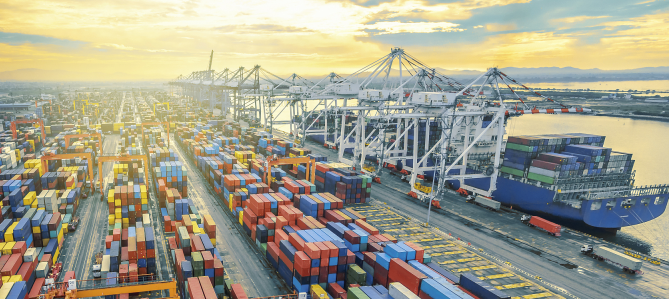Opportunities and Challenges After the RCEP Came Into Effect
2022. 1. 4
Opportunities and Challenges After the RCEP Came Into Effect

The Regional Comprehensive Economic Partnership Agreement (RCEP), which was concluded on November 15, 2020, currently has 15 member States including China, Japan, South Korea, Australia, New Zealand and 10 ASEAN Member States. According to the Article 20.6 of the RCEP, "This Agreement shall enter into force for those signatory States that have deposited their instrument of ratification, acceptance, or approval, 60 days after the date on which at least six signatory States which are the Member States of ASEAN and three signatory States other than the Member States of ASEAN have deposited their instrument of ratification, acceptance, or approval with the Depositary."
Therefore, after the ASEAN Secretariat issued a notice announcing that six Member States of ASEAN including Brunei, Cambodia, Laos, Singapore, Thailand and Vietnam and four States (other than Member States) of ASEAN including China, Japan, Australia and New Zealand had formally submitted their approval documents to the ASEAN Secretary-General, reaching the threshold for the entry into force of the agreement on November 2, 2021, the RCEP came into effect for the above ten countries on January 1st, 2022. In addition, South Korea has formally submitted its approval documents to the ASEAN Secretary-General in December 2021, and the RCEP will come into effect for South Korea on February 1, 2022.
The RCEP is the largest regional trade agreement in the world so far, with its Member States covering about 30% of the world's population, 30% of global GDP, 1/4 of trade in goods and services and 31% of foreign direct investment. The RCEP is not just a simple free trade agreement, as it covers tariff reduction, trade facilitation, service investment opening, business personnel exchange, e-commerce and intellectual property protection.
Regarding the opportunities brought by the RCEP, the first and most obvious are tariff concessions. After the RCEP came into effect, more than 90% of the goods transactions between approved Member States are applicable to zero tariffs. Because China has previously had free trade agreements with 13 other Member States except for Japan to varying degrees, on the effective day of the RCEP, over 65% of the goods transactions between China and ASEAN, Australia and New Zealand are applicable to the zero tariffs immediately, and 39% and 50% (respectively) of the goods transactions between China and South Korea are applicable to the zero tariffs immediately. In addition, because it is the first time that China and Japan have established a free trade agreement, only 25% and 57% (respectively) of the goods transactions between China and Japan are applicable to the zero tariffs immediately, however, in the end, 86% of Japanese products exported to China will be applicable to zero tariff and 88% of Chinese products exported to Japan will be applicable to zero tariffs after the effective date of the RCEP.
Secondly, in addition to tariff concessions, the RCEP also uniformises the regulations on rules of origin, customs procedures, inspection and quarantine, which further improve the degree of intra-regional trade facilitation. On the effective day, the China Council for the Promotion of International Trade and its local branches issued the first batch of 158 RCEP certificates of origin, covering 69 enterprises in 12 provinces and cities across the country, involving textiles, chemical products, medical products, food, etc. The export destination countries include Japan, Australia and other effective Member States. They will help Chinese exporters to facilitate customs clearance in export destination countries.
Furthermore, the RCEP Member States also promised to achieve a high level of liberalization in service trade and investment. They also formulated provisions on intellectual property rights protection and e-commerce at the same time. All of these measures will create a stable, free, convenient and interconnected high-quality business environment for enterprises of other Member States to operate in.
For Chinese enterprises (both foreign-invested enterprises in China or Chinese domestic enterprises), the entry into force of the RCEP is both an opportunity and a challenge. On the one hand, the RCEP has significantly improved the level of liberalization and facilitation of intraregional trade and investment, and the market space of enterprises will be significantly expanded. It will also enhance regional industrial cooperation, strengthen the regional industrial chain supply chain, and ensure smoother business activities of enterprises. However, on the other hand, due to the more open trade environment in the region and the influx of products from foreign advantageous industries (especially advanced manufacturing), it will undoubtedly make domestic relevant enterprises face stronger competition, which will bring pressure on these enterprises to transform and to upgrade.
Therefore, in addition to continuous industrial upgrading, Chinese enterprises also need to be familiar with the content of RCEP in time, make full use of a series of preferential policies and facilitation rules, including mastering the specific operating procedures such as application procedures for the certificate of origin, and making good use of the accumulation rules of the region of origin in the RCEP, so as to successfully meet the challenge of international competition.
As a law firm that has provided high-quality legal services to hundreds of Chinese and foreign enterprises for many years, A&Z has long paid attention to foreign investment, international trade, customs & logistics and international intellectual property protection, hence accumulating profound professional knowledge. A&Z has many domestic and foreign sources to constantly follow-up the latest legislation and law enforcement, so as to provide more needed help for Chinese enterprises, after the RCEP takes effect.



